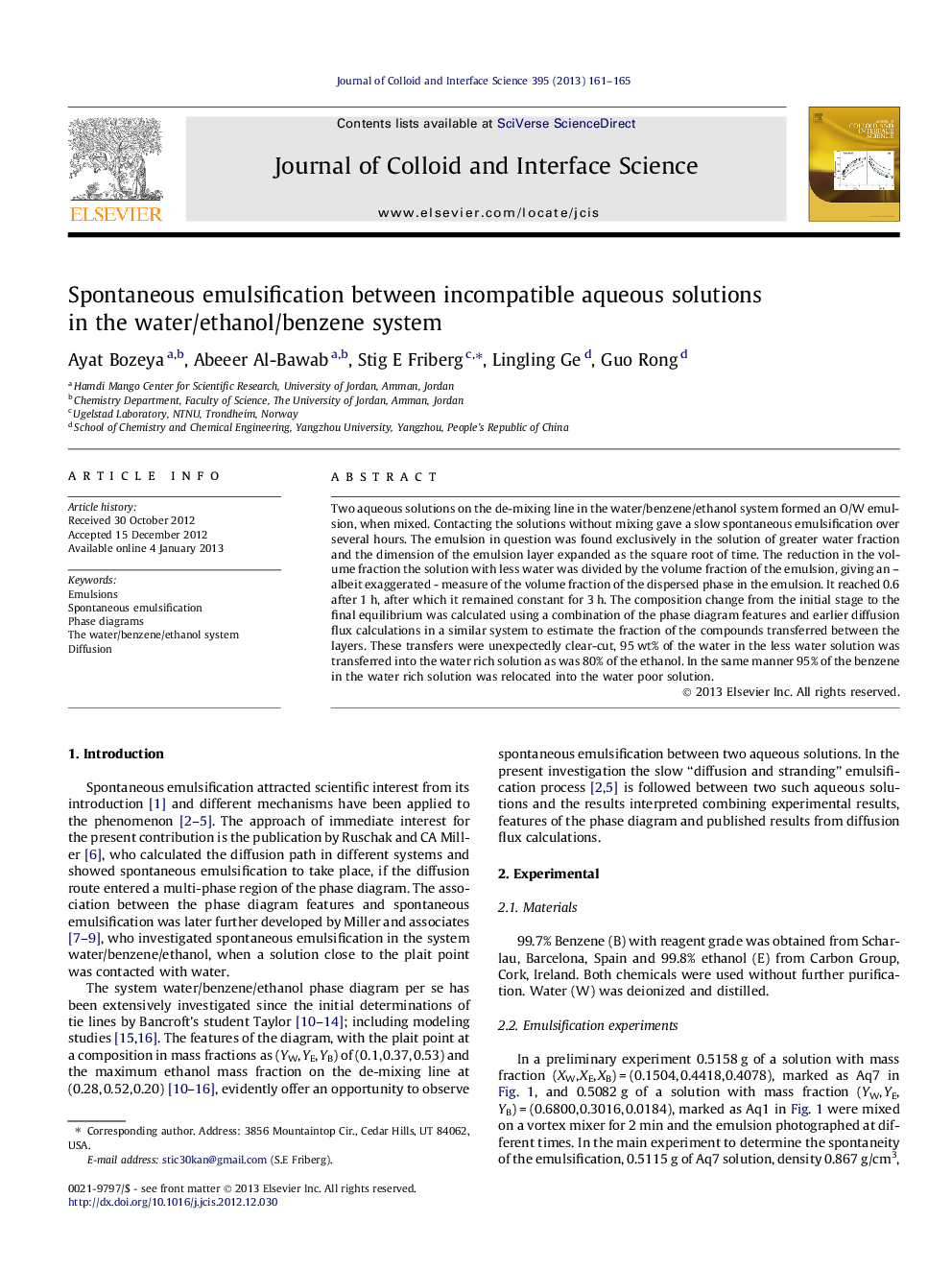| Article ID | Journal | Published Year | Pages | File Type |
|---|---|---|---|---|
| 608059 | Journal of Colloid and Interface Science | 2013 | 5 Pages |
Two aqueous solutions on the de-mixing line in the water/benzene/ethanol system formed an O/W emulsion, when mixed. Contacting the solutions without mixing gave a slow spontaneous emulsification over several hours. The emulsion in question was found exclusively in the solution of greater water fraction and the dimension of the emulsion layer expanded as the square root of time. The reduction in the volume fraction the solution with less water was divided by the volume fraction of the emulsion, giving an – albeit exaggerated - measure of the volume fraction of the dispersed phase in the emulsion. It reached 0.6 after 1 h, after which it remained constant for 3 h. The composition change from the initial stage to the final equilibrium was calculated using a combination of the phase diagram features and earlier diffusion flux calculations in a similar system to estimate the fraction of the compounds transferred between the layers. These transfers were unexpectedly clear-cut, 95 wt% of the water in the less water solution was transferred into the water rich solution as was 80% of the ethanol. In the same manner 95% of the benzene in the water rich solution was relocated into the water poor solution.
Graphical abstractFigure optionsDownload full-size imageDownload high-quality image (87 K)Download as PowerPoint slideHighlights► Spontaneous emulsification between aqueous solutions in water/benzene/ethanol system. ► The spontaneous emulsification was of the “diffusion and stranding” kind. ► Emulsification took place exclusively in the most water rich solution. ► Combined phase diagram analysis and computed diffusion fluxes explained the results.
